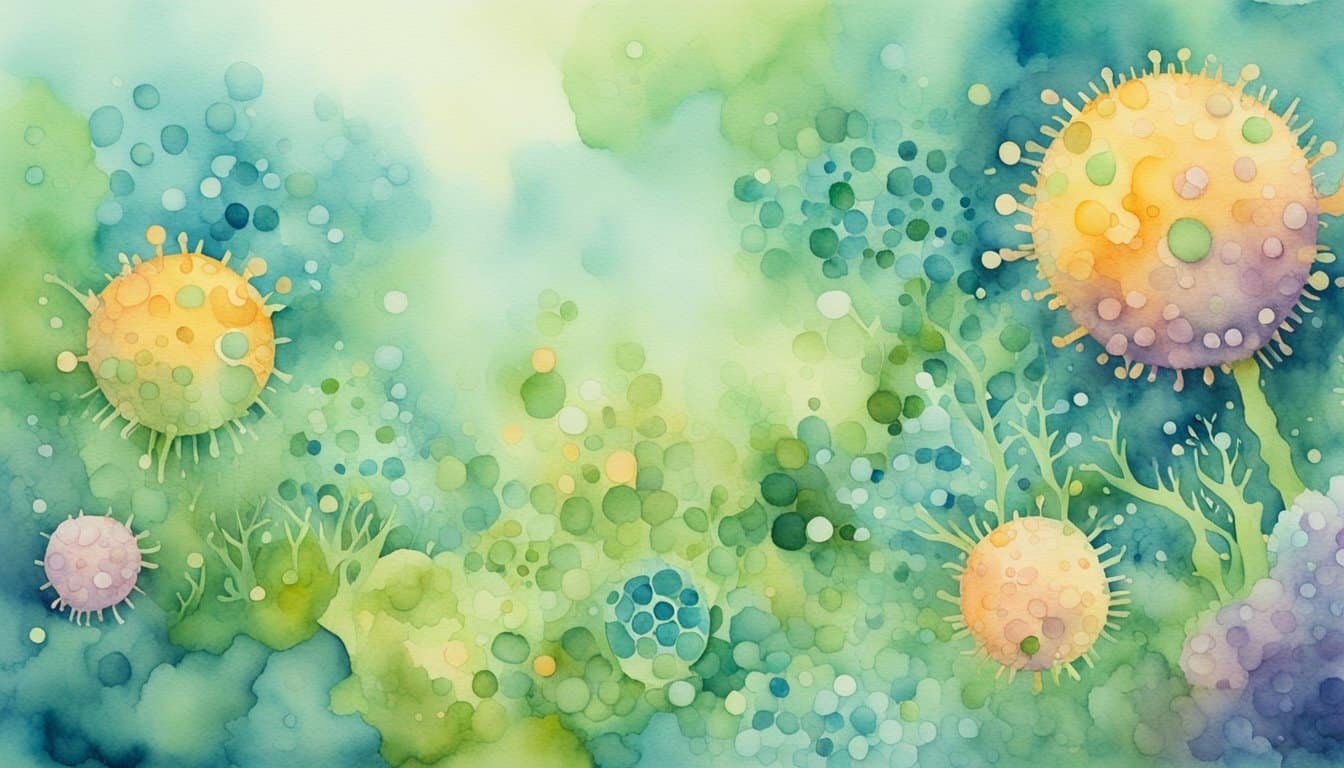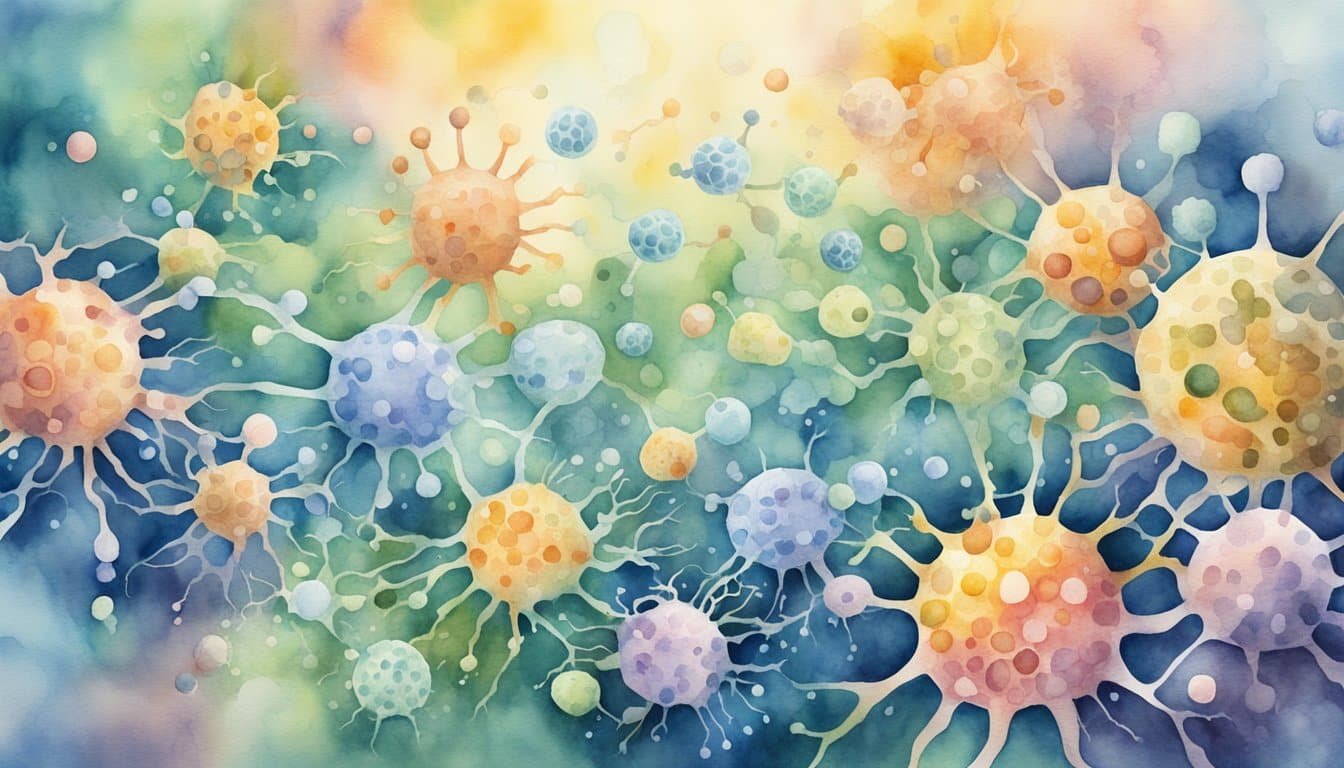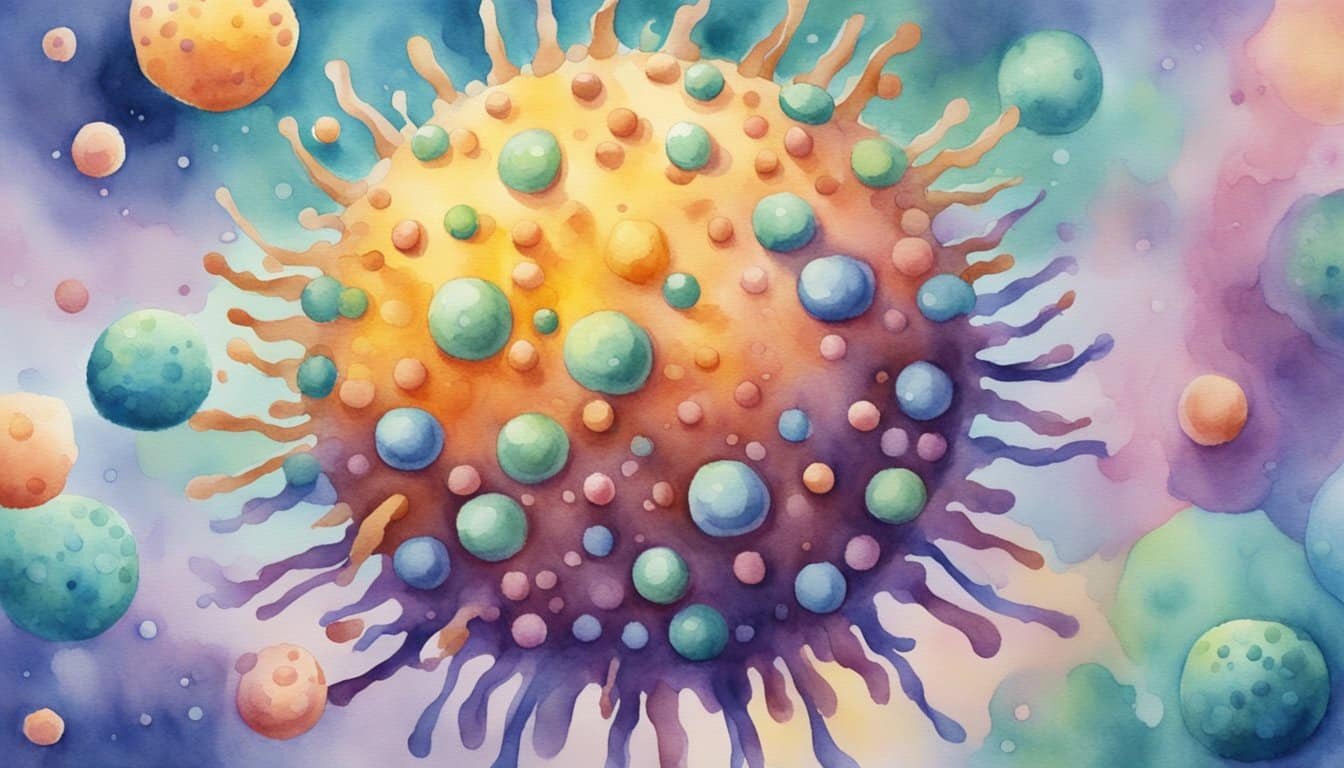Defining Life: Criteria and Viruses
The quest to classify viruses as living or nonliving hinges on the complex nature of life’s criteria and how these entities interact with biological systems. Let’s explore the vital functions of life and how the unique attributes of viruses challenge conventional definitions.
Vital Functions and Viral Exceptions
All living organisms are commonly characterized by a set of vital functions, such as metabolism, growth, response to stimuli, and reproduction. Viruses, however, do not exhibit these functions autonomously. For instance, viruses have genetic material but cannot replicate it without a host cell; they hijack the cellular machinery of organisms to multiply. This parasitic relationship puts viruses in a peculiar category—neither fittingly alive nor conclusively dead.
- Metabolism: Absent in viruses unless occupying a host.
- Growth: No increase in size; simply assembles particles.
- Response to stimuli: Only recognizes suitable host cells.
While some might argue that the capacity to evolve positions viruses within the realm of the living, their inability to maintain homeostasis or process nutrients independently complicates this view. Viruses exist in a kind of biological limbo, challenging the boundaries of what it means to be alive on Earth.
Cellular Structure: Presence and Absence
Cellular structure is another cornerstone in defining life. Living organisms typically possess complex combinations of organelles, including nuclei, within defined membranes.
- Organelles: Not present in viruses.
- Capsid: Protective coat present, not found in cellular life.
- Size & Complexity: Viruses range from simple to complex structures.
Viruses are encapsulated only by a protective protein shell known as a capsid, and lack other structural components like those found in bacterial or eukaryotic cells. Despite their simplicity, the structures of some virus species can rival the complexity of simpler organisms. Adding another layer of complexity, certain giant viruses challenge these criteria with their large size, intricate morphology, and more substantial genetic material.
Conventional biology dictates that the absence of traditional cellular organelles suggests a nonliving status. Yet, the ability of viruses to affect living organisms, adapt to the environment, and impact the immune system on such a grand scale epitomizes their significant “role” in nature’s tapestry. This dichotomy presents a conflict: are viruses mere poisons or obligate intracellular parasites teeming on the edge of life? The debate continues as new discoveries unfold within the microscopic world.
Viral Reproduction and Its Implications on Life Status

The crux of the debate on whether viruses are living entities hinges on their unique reproduction methods that blur the lines between life and non-life.
Viral Lifecycle and Dependency on Host Cells
Viruses, entities like HIV and COVID-19, exhibit a fascinating yet parasitic lifecycle. They rely entirely on host cells to replicate, as they lack their own ribosomes and metabolic machinery. Once inside a host cell, viruses hijack the cellular apparatus, directing it to produce viral components—DNA or RNA, proteins, and envelopes. For example, giant viruses such as mimiviruses challenge traditional boundaries by having more complex genomes that encode some components typical of “living” organisms, further stirring the debate.
Genetic Replication and Evolution
The capacity of viruses to replicate their genetic information is central to their role in the diversity of life and the tree of life. Through replication, viruses can evolve, adapt, and sometimes become problematic, as seen with coronavirus outbreaks. The key lies in their genome—a compelling mix of DNA or RNA—which, when replicated, may reproduce errors or mutations leading to evolution. Despite not being able to grow or reproduce without a host, their genetic influence and the sheer variety of viral forms, from flu to giant viruses, raise intriguing questions about their place in the biological world.
Interaction with Hosts and the Environment

Viruses exhibit a complex interaction with their hosts, ranging from parasitism to mutualism, and have a profound impact on both individual organisms and entire ecosystems. Understanding these dynamics sheds light on the ongoing debate regarding the categorization of viruses as living entities.
The Host-Parasite Relationship
When a virus infiltrates a host cell, it commandeers the cell’s machinery to replicate its genetic material. This intrusion typically triggers an immune response. Scientists have observed that some viruses, like the flu or cold, can cause acute diseases in humans, while others may coexist with their hosts without causing noticeable disease. The Ebola virus, a particular virion with a distinct shape, exemplifies a virus that can devastate host populations quickly, leading to serious outbreaks.
Bacteria and archaea are also confronted by viral infections, with bacteriophages – viruses that infect bacteria – playing a critical role in bacterial evolution. The relationship between a virus and its host is a dynamic one, with the host’s immune system constantly evolving to detect and neutralize viral threats, and viruses, in turn, modifying their strategies to successfully infect host cells.
Viral Influence on Ecosystems and Evolution
Viruses can shape not only the fate of individual organisms but also the genetic landscape of populations. They drive evolution by acting as agents of natural selection, sometimes even transferring genetic information between different host species. In marine environments, for instance, viruses infecting microorganisms like plankton can influence the environment‘s nutrient cycles and living things within it.
Beyond disease, viruses also play a role in sustaining life. As some scientists point out, virus-based genetic material in plant and animal genomes can lead to beneficial adaptations. These complex interactions point to viruses’ integral role in biology, from the level of cells to the biosphere. Such findings highlight the sophisticated interplay between viruses, their hosts, and the environment, blurring the lines in the age-old question of whether viruses are truly living things.
Disease and Medical Perspectives

From the common cold to pandemics like COVID-19, viruses impact organisms around the world. Understanding their role is crucial to developing medical interventions.
Viruses as Agents of Disease
Viruses are formidable agents of disease, known to hijack the machinery of a living cell to replicate their genetic information. Unlike other organisms, they can’t reproduce on their own. Diseases like AIDS and Ebola underscore viruses’ impact on human life. For example, Ebola virus is known for its high mortality rate, while SARS-CoV-2, the coronavirus causing COVID-19, led to a global pandemic, demonstrating how new diseases can emerge and spread among the species of Earth.
The role that viruses play in diseases varies; some can cause severe illness in animals and humans, yet others may be asymptomatic. Researchers study the complex interactions between viruses and the immune system to understand how diseases evolve and spread.
Research, Vaccines, and Treatment Strategies
Research into viral diseases has led to significant genetic innovation in developing vaccines and treatments. For instance, vaccines for COVID-19 were developed rapidly due to advances in understanding the virus’s structure and genetic information.
Treatment strategies can also include antiviral medications and supportive care to bolster the immune system. Practices like the use of hand sanitizer can help prevent the spread of viruses.
Advancements in this field depend on data collection and analysis to ensure effective responses to existing and emerging diseases like SARS, Ebola, and various types of cancer. The ongoing exploration of the classification of viruses is pivotal to our comprehension and response to these microscopic entities that have a massive impact on life.
The Debate: Are Viruses Alive?

The question of whether viruses are alive stirs a notable debate in the field of biology. On one hand, viruses exhibit some characteristics of living things, such as containing nucleic acids and the ability to invade host cells, prompting reproduction of their kind. For example, the DNA or RNA inside their protein coat or envelope instructs a host cell to create more viruses.
However, unlike organisms like plants, animals, and fungi, viruses lack a cellular structure, which is a common criterion for life. They don’t possess membranes, organelles, nor can they carry out metabolism on their own. This has led some scientists to regard them as intricate nonliving entities—more like poisons than actual species.
Some interesting examples that blur the lines include the flu virus and COVID-19 causing SARS-CoV-2. These viruses cause widespread disease, yet cannot replicate without a host, akin to parasites. Comparatively, amoebae—undeniably alive—can move, eat, and reproduce independently, highlighting the disparity with their virus counterparts.
Furthermore, the microscopic size of viruses adds to the complexity of this argument. They’re significantly smaller than even the smallest of bacteria, and this minuteness makes their study and classification a challenge.
| Characteristics | Viruses | Living Organisms |
|---|---|---|
| Reproduction | Host-dependent | Independent |
| Metabolic Activity | Absent | Present |
| Cellular Structure | Absent | Present |
| Response to Stimuli | Limited | Present |
Debates such as this reflect the dynamic nature of science, where even the concept of what’s considered alive can be put under the microscope. As research continues, our understanding may shift, just as it has with past diseases like the common cold to more recent examples like COVID-19.

